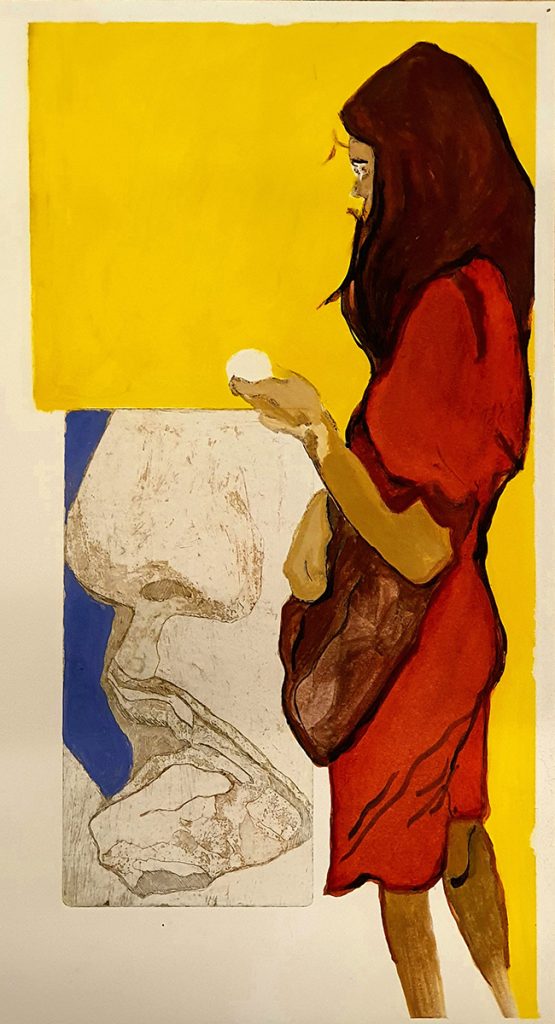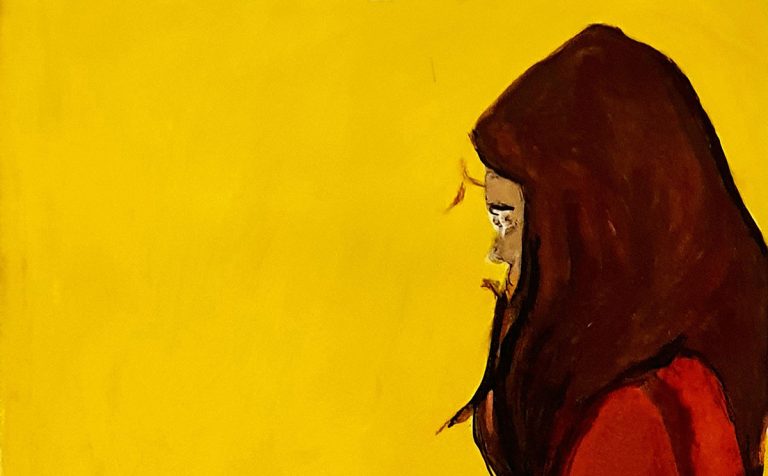In the quaint streets of Thessaloniki, Greece, a city known for its rich history and vibrant culture, Katerina Tsitsela embarked on her artistic journey. Born into the artistic fervor of this historic locale, Tsitsela’s early exposure to diverse artistic expressions shaped her unique artistic voice, one that traverses the realms of painting and engraving with profound introspection and emotional depth.

Katerina Tsitsela’s academic path is as layered as her artworks. Her journey began at the Accademia di Belli Arti, Pietro Vanucci in Perugia, Italy, where she honed her skills from 2000 to 2003. The historic Italian influence is palpable in her attention to detail and the classical undertones of her work. Her education continued back in her hometown at the Aristotle University of Thessaloniki, where she delved deeper into Fine Arts from 2006 to 2014, culminating in a Master’s degree from the School of Fine Arts. This extensive academic training equipped Tsitsela not only with technical skills but also with a philosophical and psychoanalytical approach to art.
Tsitsela’s art is a journey into the psyche, exploring what she describes as “internal landscapes”—the landscapes of the human soul. “I am an artist whose artistic research ranges from painting to engraving,” Tsitsela shares. Her work delves deep into human perception, uncovering the layers of emotions and mental states through her expressive landscapes. These are not mere representations of physical spaces but are psychoanalytically interpreted visions of internal emotional and mental conditions.
Each stroke of Tsitsela’s brush and each line of her engravings articulate the complexities of human emotions with clarity and intensity. The use of color and texture in her paintings brings forth the turmoil of the human experience, allowing the audience to confront their own inner landscapes and emotional struggles. This approach not only reflects her technical prowess but also her deep empathy and understanding of human vulnerabilities.
“In my work, I show the emotional and mental condition,” Tsitsela reflects. Through her art, she addresses profound human emotions like anxiety and depression, portraying them not just as ailments but as part of the intricate tapestry of human existence. Her works are poignant narratives of the struggle to cope with these emotions authentically, offering a mirror to the viewer’s own experiences and encouraging a dialogue about mental health without stigmatization.
One of Tsitsela’s techniques involves combining engraving with oil on both paper and canvas, a method that allows her to explore the texture and depth of her subjects in new and exciting ways. This technique enhances the visual and tactile sensation of her works, making each piece a unique exploration of the chosen medium’s potential. Her artworks do not merely capture the inner world of human beings; they invite the audience into a multisensory exploration of that world.
Tsitsela’s art serves as a bridge between the visible and the invisible, the external world and the internal psyche. Each piece is a window into the depths of the human spirit, a study in the complexity of the mind and its profound impact on our perception of reality. Her exhibitions not only display art but provoke thought, stir emotions, and initiate conversations around the often obscured inner workings of our minds.
In a world where mental health is increasingly coming to the forefront of societal concerns, Katerina Tsitsela’s artworks resonate more profoundly than ever. They are not only beautiful, emotive, and technically accomplished but are also crucial in their ability to foster understanding and compassion through art. By merging traditional techniques with innovative approaches, Tsitsela continues to push the boundaries of what art can communicate and how it can affect us.
Through her vivid portrayals of the human condition, Katerina Tsitsela invites us all to pause, reflect, and perhaps find solace in the shared experience of being human. In her artistic explorations, we find a call to empathy, a reminder of our own internal landscapes, and a beacon of hope for authentic engagement with our deepest selves.

